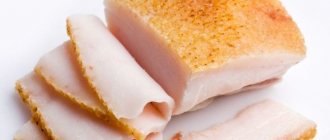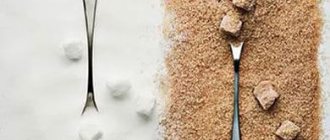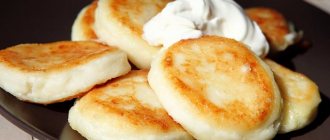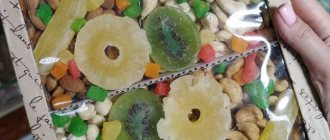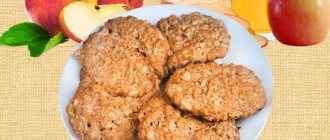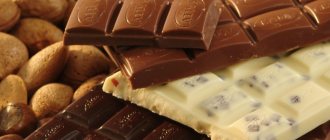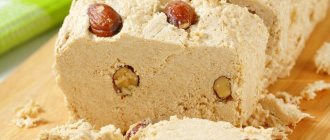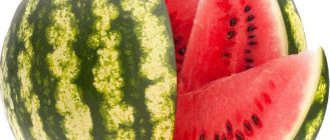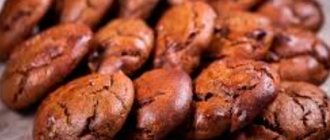Composition of pasta
| Vitamins and elements | Useful action | Contents per 100 g of product |
| Vitamin B1 (thiamine) | Improves memory and thinking, normalizes appetite and improves mood, ensures material metabolism | 0.17 mg |
| Vitamin B2 (riboflavin) | Burns sugar and energizes, stimulates the functioning of nerve cells, improves skin condition | 0.04 mg |
| Vitamin B4 (choline) | Strengthens and protects brain cells, restores the liver, lowers cholesterol levels | 52.5 mg |
| Vitamin B5 (pantothenic acid) | Stabilizes kidney function, supports immunity and nervous system function | 0.3 mg |
| Vitamin B6 (pyridoxine) | Regulates protein metabolism, treats nervous diseases, activates the work of nerve cells | 0.16 mg |
| Vitamin B9 (folic acid) | Relieves fatigue and irritability, helps with insomnia, improves blood composition | 20 mcg |
| Vitamin E (tocopherol) | Restores, cleanses and rejuvenates the body, improves hormonal levels | 2.1 mg |
| Vitamin H (biotin) | Helps with depression and improves mood, improves hair condition, prevents hair loss and premature graying | 2.02 mcg |
| Vitamin PP (niacin) | Normalizes hematopoiesis, provides the body with energy, stabilizes hormonal levels | 2.9 mg |
| Calcium | Normalizes blood pressure and pulse, improves the condition and appearance of nails, forms and strengthens the bone skeleton | 19 mg |
| Sodium | Regulates fluid balance in the body, removes toxins, prevents stroke | 3 mg |
| Magnesium | Ensures normal functioning of nerve cells, muscles and tissues, dilates blood vessels | 16 mg |
| Potassium | Maintains normal water balance in the body, supplies the brain with oxygen, lowers blood pressure | 123 mg |
| Phosphorus | Forms and strengthens the bone skeleton and tooth enamel, improves memory and concentration | 87 mg |
| Chlorine | Normalizes blood pressure and prevents swelling, improves the functioning of the liver, heart and blood vessels | 77 mg |
| Sulfur | Strengthens muscles, ligaments and tendons, improves the condition of hair and nails, helps with cramps | 71 mg |
| Iron | Protects the body from bacteria, improves digestion, prevents excess weight problems | 1.6 mg |
| Silicon | Restores skin elasticity, strengthens hair and nails, normalizes blood sugar levels | 4 mg |
Is it possible to have pasta while breastfeeding: obvious benefits and possible harm
First of all, only pasta made from durum flour (category A) can benefit the human body: the valuable components they contain are very important for a nursing mother and child. Cheap products (grades B and C) will not have a beneficial effect, except that they will provoke excess weight gain.
- Due to the sufficient fiber content, the product is able to remove toxins from the body. It is not absorbed by the body, but, like a sponge, absorbs all harmful substances (toxins, salts, “bad” cholesterol), while simultaneously increasing intestinal perilstatics and improving its microflora.
- Pasta is rich in complex carbohydrates, and this is a source of energy for a nursing mother with her busy rhythm of life. In addition, the product gives you a feeling of fullness for a long time (which is important for maintaining a slim figure). In addition, the flour product contains a lot of protein, which is a building material for the body.
- Since pasta does not contain preservatives or dyes, it is safe for the baby in terms of possible allergies or gastrointestinal disorders. Such a reaction can only occur if the child has a negative perception of gluten (it is contained in the protein of wheat flour), but this does not occur so often.
- B vitamins are extremely useful during lactation: they improve metabolic processes, have a beneficial effect on a woman’s appearance, and stabilize the functioning of her nervous system. Vitamins H and E are actively involved in stabilizing hormonal levels after pregnancy and childbirth.
- Phosphorus and calcium help the formation of the baby’s skeleton, potassium has a beneficial effect on blood composition.
Complex carbohydrates, which pasta is rich in, maintain a feeling of fullness for a long time and give the body energy.
However, pasta in certain situations can also have a harmful effect on the body of a nursing mother and baby.
- If a woman or baby has a tendency to constipation, then the abuse of flour products can aggravate the process. The baby may suffer from colic and flatulence.
- Pasta itself is not very high in calories, but it is rarely eaten on its own. Many additives (for example, fatty cheese, meat sauce) greatly increase the number of calories in the dish. This can have a detrimental effect on a woman's figure after childbirth.
If a mother abuses pasta, the baby may suffer from constipation and colic.
Rules for eating pasta during lactation
- A nursing mother can eat various types of pasta, except instant noodles! This product contains a large amount of chemicals and hot spices that should not be consumed while breastfeeding. Such food leads to serious digestive disorders in the infant, severe allergies and even poisoning;
- At first, you should eat simple pasta without meat or other additives. You can add olive oil to the dish. Then introduce various options for dishes with pasta into your breastfeeding diet;
- Boiled pasta without additional ingredients can be eaten already 7-10 days after birth;
- When you first try, try a small portion of up to 50-60 grams. If there is no negative reaction in the child, gradually increase the dosage;
- The daily norm for breastfeeding is 150-200 grams, the weekly norm is up to 400 grams;
- Don't eat fried pasta! You can boil the product, bake it or cook it in a slow cooker;
- Use pasta with meat products with caution. It is better to take homemade minced meat from beef or chicken. Also, a nursing mother can, in addition to pasta, eat lean meat or fish, boiled, stewed and sometimes baked;
- Pasta with mushrooms or mushroom cutlets should be excluded from the diet, at least in the first six months of lactation. Mushrooms during breastfeeding can harm the still fragile body of a newborn baby;
- A nursing mother should not eat pasta with seafood, as it negatively affects the digestion and well-being of the infant;
- You can add pasta or noodles to vegetable and chicken soups, broth;
- A nursing mother can also eat macaroni and cheese, but in limited quantities.
What to add?
It is advisable to eat the pasta without anything or with olive oil, especially in the first months of feeding. During this period, you can add only some vegetables and herbs to which the child is not allergic (broccoli, peeled cucumbers, dill, parsley).
As a sauce you can use:
- low-fat sour cream;
- cream 10% fat.
For the 3rd–4th month, you can add unsalted low-fat cheeses:
- mozzarella;
- feta cheese;
- Adyghe cheese;
- cottage cheese.
How to choose the right pasta
- Take products made from durum wheat of the highest category;
- Check the packaging for leaks. It's good if it's transparent. This way you will carefully examine the contents;
- Avoid crumbled pasta;
- The product must contain only durum wheat flour and water;
- The color of pasta is cream or light yellow. Do not take brightly colored goods;
- After cooking, the products do not become soft and do not stick together. In this case, the water should not turn yellow or white;
- Finished pasta should be dense without lumps or bitter aftertaste.
Recipes for nursing mothers
During breastfeeding, pasta can only be eaten boiled or baked, preferably without any additives, especially in the first month. To diversify your dish, we recommend taking note of these recipes.
Dietary with vegetables in a slow cooker
Products:
- pasta - 300-400 g;
- 1 small onion;
- 1 carrot;
- 1 bunch of parsley;
- salt to taste.
How to cook:
- Pour water into the multicooker and set the cooking time to 15 minutes.
- Chop the onions and carrots.
- When the water boils, add the pasta and vegetables, add salt, and stir well.
- Sprinkle the finished pasta with parsley.
Navy style
This dish can be eaten in the 4th–6th month of lactation.
Products:
- durum wheat pasta - 300–400 g;
- minced chicken or turkey (loin or simply with minimal fat content) - 200–250 g;
- 1–2 chicken eggs;
- 1/2 cup sour cream 10% fat;
- salt, natural spices;
- deep baking dish with lid.
How to cook:
- Boil the pasta until half cooked, drain in a colander and rinse under running water.
- Mix semi-cooked pasta with raw minced meat.
- Mix eggs and sour cream, add salt and spices (optional).
- Grease the mold with sunflower oil, lay out the pasta with minced meat and pour in the egg and sour cream sauce.
- Place in a preheated oven for 30 minutes.
Harm
There are also a number of negative properties in eating pasta that should not be forgotten:
- Constipation may occur in mother and child (but this is quite rare).
- Pasta contains gluten, which can negatively affect the baby's health. In particular, discomfort in the intestines may be caused and an allergic reaction may begin.
- Pasta has a high calorie content (on average 340 kcal per 100 grams of product). If you do not properly combine them with other products, then excess weight for the mother will become a real threat.
Important! In order not to suffer from the negative properties of such a product, you must strictly adhere to the dosage and prepare everything correctly.
From what day should it be introduced into the diet?
A nursing mother can safely start eating pasta while breastfeeding within a week to a week and a half after giving birth. But to avoid any health problems, you must adhere to certain rules:
- The first portion should not be large. Mom can eat no more than 50 grams of pasta at first. It is extremely important to avoid spices when preparing a dish.
- It is important to carefully monitor how the child feels when consuming such a dish. An extremely important factor is the child’s digestion: is there any constipation, bloating, or gas formation.
- If a negative reaction is not observed after consuming pasta, then the next portion may be significantly larger, but should not exceed 150 grams. You should refrain from frequent consumption of this dish. But you can eat twice a week without fear of consequences.
Pasta during lactation
Here are the advantages of this product:
- Reasonable price.
- Speed and ease of preparation.
- It goes well with other products, so it’s easy to add variety to your diet.
- Pleasant taste.
- Good satiety and a large amount of energy can be obtained by eating pasta, as they contain a large amount of complex carbohydrates. Therefore, there will be no sudden spikes in glucose.
- Durum pasta contains a lot of protein. Its amount can reach up to ten percent. Including the fact that this is a carbohydrate product, the percentage of this substance is quite large. And the supply of protein of any origin is necessary for the human body.
- An environmentally friendly and healthy product if it was made from quality materials.
Pasta during breastfeeding can have a negative effect on the mother and newborn:
- sometimes both may experience constipation;
- Allergic reactions and intestinal colic may occur if the pasta contains gluten;
- the high calorie content, as well as the wrong combination with other foods, can cause excess weight gain.
Based on the pros and cons of using this product, we can say that pasta is beneficial for breastfeeding. You just need to remember the shortcomings of the products and eat them in portions, not forgetting to cook them correctly.
A nursing mother should definitely include pasta in her diet. This can be done already in the first month after birth - on days 7–10 (the dish should be boiled, without any additives). In this case, it is necessary to follow the rules for introducing a new product.
The first tasting is carried out in the morning, and you do not need to consume more than 50 grams of flour products. If the child’s body reacts normally to the dish, the daily portion is gradually increased to 200 grams. However, you need to remember that pasta is not an easy dish for a woman’s gastrointestinal tract, weakened after childbirth. Therefore, you should not eat more than 500 grams of dry product per week.
The daily portion of pasta should not exceed 200 g, and at first they are consumed without any additives
In addition, a nursing mother should consider the following important points:
- If a woman suffers from constipation, then she should minimize the consumption of flour products.
- You only need to purchase products made from durum wheat varieties. There is no need to skimp on food quality.
- A nursing mother can try any variety of pasta (spaghetti, cones, feathers, shells, snails, etc.). The only exception is instant noodles (such as “Rolton”), which contain a huge amount of spices and flavorings. They will undoubtedly have a detrimental effect on the baby’s body.
- At first, you should eat pasta without any additives. The only thing is that if you wish, you can season the dish with olive oil. After the first month, other components are gradually introduced into the dish: low-fat grated cheese (in small quantities), vegetable sauce, minced lean meat (beef, chicken, turkey), boiled or baked fish. The combination of pasta and fatty meat sauce is too heavy a burden on the digestion of mother and child. During lactation, dishes with mushrooms are also unacceptable. At least in the first six months of the baby’s life, you need to refrain from pasta with seafood (shrimp and squid): the risk of an allergic reaction is too great. It is unacceptable to season the dish with store-bought mayonnaise or ketchup: they are replete with chemical additives.
- Pasta, in particular vermicelli, can be added to vegetable and meat soups.
- The product should not be eaten fried: this will further burden the digestive tract. Food must be boiled or baked.
Fried foods, including pasta, are prohibited during lactation Mushrooms are an unbearable burden for a baby’s digestion Meat served with pasta should be lean Of course, pasta with seafood is a tasty and piquant dish, but it can cause allergies in a baby If a woman suffers from constipation, then it is better to refuse flour products. Instant noodles are harmful for any person, especially for a nursing mother and baby
How to buy a quality product?
Even when buying the most ordinary cones or spaghetti, you need to approach their purchase responsibly so that you buy a high-quality and healthy product. If you want to purchase such products, then follow the recommendations given below:
- First, you should read what is written on the package. The right choice can be made simply by reading all the information.
- Healthy pasta should consist only of water and durum wheat flour.
- It is necessary to carefully inspect the pasta packaging. If crumbs were found inside it, this means that the product was made from low-quality raw materials.
- A quality product can be recognized by its color. The product is made from high-quality raw materials and has a uniform, light yellow tint. The bright color of the pasta indicates the addition of dyes.
- Today, pasta of different shades is very common. They were invented for children to increase interest in food. Natural dyes are allowed. These are spinach, beet or carrot juices.
- When pasta is cooked, the water should be clear or slightly cloudy; yellow color indicates dyes in the product.
- It is necessary to prepare pasta while breastfeeding in strict accordance with the instructions. A good product does not stick together or become overcooked.
- When purchasing a product, you need to choose one that matches the price and quality. A good product cannot have a very low price, but you shouldn’t buy expensive pasta just because of a well-known brand either. You can select a product at a price that will be slightly above average.
